Overview

Terkejut, bangun di Indonesia
Translation: “Waking up in Indonesia, surprised or taken aback and aware of your new surroundings.”
You have woken up in Indonesia and suddenly find that you are an expert on one aspect of Indonesian life. Your friends and family are coming to visit and you will be sharing your expertise with them, so that they can enjoy it too.
In a small group, you will:
-
choose a topic and research it carefully
-
develop a group presentation to share your knowledge
-
show us your expertise!
Watch the Waking up in Indonesia video to get inspired (transcript and attributions).
Work through the sections below to complete your task. When you have finished, you will be asked to provide feedback to help improve the quality of this resource. A survey can be found in the Evaluate section.
Get organised
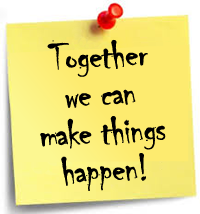
Form a project group of 3-4 students. Together, discuss the following questions.
-
What do you think you will be doing in this project?
-
What are two benefits of collaborating in a group on this project?
-
How will you make sure you work as a team?
Teamwork
Complete these steps to help get your collaborative work started.
Set up a shared folder, for example on Google Drive or Office 365. One group member should create the folder and then share it with the others, and your teacher.
Store all the documents and other files for your project in the shared folder. All group members can view and contribute to the content anytime, anywhere. In your shared work space, your group can:
-
brainstorm ideas together
-
record roles and responsibilities
-
develop a project schedule to keep on track
-
type research notes in a shared document
-
comment on each other’s work
-
reflect on how your project is going
-
record all information sources
-
store images, audio or video for the group’s presentation.
Discuss ways you can use and organise your shared work space during the project.
|
|
To make conversations fair, respectful and useful, it’s good to develop some guidelines around how you talk and listen to each other.
Brainstorming ideas, making group decisions and resolving differences of opinion need a range of conversation skills. These might include:
-
staying focussed
-
asking questions
-
ensuring everyone gets a turn
-
making connections
-
listening carefully
-
clarifying meaning.
Create a shared document in your collaborative work space and record your group’s guidelines for good collaborative conversations. Use the suggestions above and add your own ideas.
Share tasks and responsibilities
Successful group work means that everyone contributes.
-
Everybody must have at least one job and will probably take on several. Sometimes a role can be shared.
-
Roles may change and new jobs will arise, for example, after the group decides on how to present their topic.
Check out some roles and responsibilities.
-
What tasks will your group assign now?
-
What tasks should be assigned before starting your research?
-
What roles might be needed as you develop your group presentation?
Make a copy of the team roles template1 to your shared work space and record the roles and responsibilities for each member of your group. View team roles example2 for more ideas.
Update your team roles document as needed during the project.
By now, you should have set up a shared work space, adopted discussion guidelines, developed an initial list of roles and assigned responsibilities.
How has your group gone so far?
-
What have you done well?
-
What could you do better? How?
Record your responses in a shared document in your collaborative work space. You could use Microsoft Sway or OneNote, or a Google Doc.
Add to this evaluation at key points in the project. This gives you a chance to improve as you go along. You may want to include a journal of the team’s processes, including a photo record of your work at various stages.
You might also keep a personal learning log.
At the end of the project, your audience will evaluate your presentation. You will also review your performance and reflect on your learning. This can help you do things even better next time.
Investigate
The three topic areas below contain suggested topics you could explore. Visit each area by clicking on the image. Decide on the topic your group will investigate and then go to the Research tab to start your investigation.
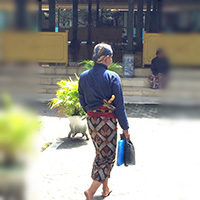
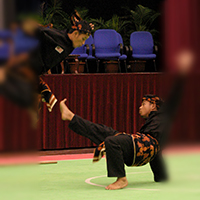
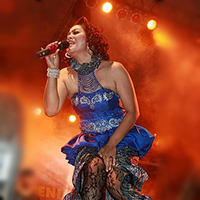
Images (all adapted): Music and Entertainment – Doni Ismanto3 | (CC BY 2.04), Sport - Silat B.A. Погадаев | (CC BY 1.05)
What do you already know about your topic? What do you want or need to know?
-
Brainstorm ideas in your group.
Consider the who, what, when, where, why and how of your topic. This might include its background and history. -
Write research questions that address all the things you want to find out.
-
Divide the research questions among your group members.
-
Use the research guide to help successfully complete your investigation.
Want to dig deeper?
Be a language detective
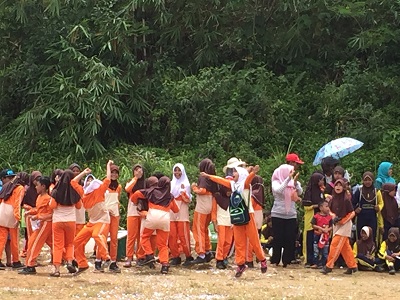
This activity is for Years 7-8 students.
Make a list of Indonesian words associated with your topic. The words might relate to:
-
clothing worn or equipment used
-
techniques and/or other actions carried out
-
associated objects, people, places, or history.
List at least five key Indonesian words and learn how to pronounce them.
All group members should practise writing and saying the words.
|
|
Conduct an interview

This activity is for Years 9-10 students.
Conduct a written or spoken interview with an Indonesian speaker about your topic. The person doesn’t need to be an expert.
-
Prepare at least 5 interview questions. Write your questions in Indonesian.
-
Both the question and the responses must be in Indonesian.
-
Your interview can be a written exchange (for example, via email) or a face-to-face meeting. One or more group members may ask the questions.
-
Remember to ask permission if you want to record a face-to-face interview.
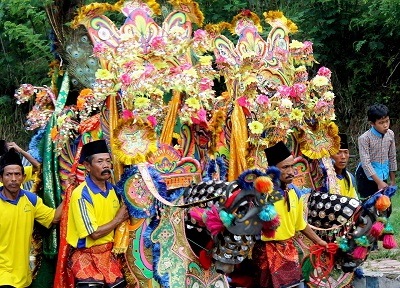
Report back to the group when everyone has finished their investigation.
-
Tell the other members of the group what you learnt.
-
Use the information you recorded as a prompt.
-
If you researched in pairs, decide how you will share the report.
-
-
Get feedback from the group.
-
Can other members summarise the key information?
-
Does anyone have questions? If so, can you answer them?
-
Has your research question been answered? If not, what’s missing?
-
After all reports have been made, use the questions below to:
-
evaluate how you worked as a group
-
start thinking about your presentation.
-
How did you work as a group? What did you do well together? What could have been done better?
-
Is information recorded in your own words and have sources been documented?
-
Does your group know its topic? Are you ready to show your expertise?
-
How could you present your topic to your audience? (See the Present section.)
Present
It’s time to start preparing your presentation. You can make a digital report (such as a video or slideshow), a live report (such as a hands-on demonstration), or a combination of live and digital reports. Whatever format you choose to develop:
-
keep to a 10-15 minute presentation (unless otherwise agreed with your teacher)
-
address the who, what, when, where, why and how of your topic
-
include your Indonesian topic words (Years 7-8) or interview (Years 9-10)
-
show us your expertise!
Dress rehearsal: Show your fellow class members. Ask them to evaluate your presentation. They could use a form that your group creates. (See the Evaluate section.)
Your audience: Present your expertise to your friends and family at a school event.
Preparation is the key to success. So, plan thoroughly before starting to develop your presentation.
In your group:
-
decide how best to present your expertise — see the tab Looking for ideas?
-
discuss the Tips for success and keep these tips in mind as you work
-
review your research and decide what information to include in your presentation
-
decide how to include your topic key words (Years 7-8) or interview (Years 9-10)
-
develop the idea for your presentation — you could storyboard it
-
make a list of what you need to do to make the presentation
-
assign tasks and roles to group members.
All organised? Everyone knows what to do? OK, time to start creating.
|
|
Below are some ideas for creating an interesting presentation. You could include one or more idea. Remember to consider your topic and audience, and the skills and qualities of group members.

-
Make a diary (video, blog entries or slideshow) to explain … .
-
Record a how-to video about … .
-
Record (as a video, blog entries or slideshow) a day in the life of … .
-
Create a television advertisement promoting … .
-
Make a documentary-style news report on … .
-
Do a hands-on demonstration of … .
-
Teach a lesson in … .
-
Construct a model of … .
-
Make a costume (or draw a pattern) worn by a … .
-
Dress as a … .
-
Make an illustrated Indonesian language list with audio to demonstrate pronunciation … .
The following ideas address specific topics. You may be able to adapt them for your own topic.
-
Present one or more characters from an Indonesian folk tale.
-
Design your own version of traditional Indonesian dress.
-
Teach others to play a game of Semut, Orang, Gajah. Rules can be found on the Traditional Indonesian Children’s Games website9.
-
Design and fly your own Indonesian style kite, presenting information about the significance of kite flying.
Below are some tips to help you prepare and deliver a successful presentation. Expand each tip for more information.
-
Plan your presentation and check everyone understands and agrees with the plan before you start.
-
Make sure you have enough time to finish the presentation, including all props.
-
Write scripts for live presentations.
-
Check that all the equipment you need is available.
-
Allow time to review and edit your work.
-
Brainstorm a list of the jobs that need to be done. Add to the list if you think of more tasks later.
-
Everyone in your group should have one or more tasks to do.
-
Consider the skills and strengths of each team member when assigning tasks.
-
As a group, check that everyone is on track.
-
Don’t be scared to ask for help. Discussing problems with team mates can help you find solutions.
-
Do at least three complete run-throughs of everybody’s parts of the presentation so you feel comfortable and prepared for the whole show.
-
Do a full rehearsal, including with equipment and props.
-
Double-check that you know how to use all the digital and other equipment that is in your show.
-
Even if you are reading part of your presentation off a script or screen, you still need to look up at your audience and make sure they can see and hear you.
-
If you have a smile on your face while you are presenting, you will feel better about your show, and the audience will feel the same way.
Evaluate
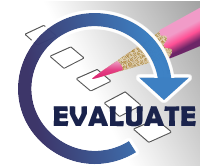
Evaluate the success of your presentation. You could ask your audience to complete one of the following:
-
a feedback form that you create
-
a quiz you create to find out what they learnt.
Collect the feedback or quiz results and analyse the responses. What did your audience think of your presentation? What suggestions did they make? Together write a review of your presentation based on the feedback or quiz results.
Exploring an Indonesian topic:
-
What have you learned about the topic that you didn’t know before?
-
What was successful about your group’s presentation?
-
What is one way you could improve the presentation?
Collaboration:
-
Name the best thing about collaborating with others to research and present your topic.
-
Name the most challenging thing about collaborating with others in this project.
-
What did you learn about yourself as you worked with others?
If you maintained your own learning log, record your reflections there.
|
|
Help improve the quality of this resource by completing this quick survey10.
Information for teachers
This resource supports students studying the 100-hour mandatory Stage 4 or 100/200-hour elective Stage 5 Indonesian courses. It also supports student-centred, project-based collaborative learning using Google G Suite, Microsoft Office 365 and other online tools.
Students work collaboratively to research a topic of cultural interest in Indonesia and make a presentation (digital and/or face-to-face) that demonstrates their learning. They investigate key Indonesian words (Stage 4) and conduct an Indonesian Q&A interview (Stage 5) related to their chosen topic. The suggested duration is 2-3 weeks.
Current syllabus
This resource addresses the NSW Indonesian K-10 syllabus (2003). It could be adapted to other modern languages (by changing the content/topic areas and suggested resources) without affecting targeted outcomes.
Key learning outcomes relate to the objective, Moving Between Cultures: Students will develop knowledge of the culture of Indonesian-speaking communities and an understanding of the interdependence of language and culture, thereby encouraging reflection on their own cultural heritage.
Stage 4:
-
4.MBC.1 demonstrates understanding of the interdependence of language and culture
-
4.MBC.2 demonstrates knowledge of key features of the culture of Indonesian-speaking communities.
Stage 5:
-
5.MBC.1 explores the interdependence of language and culture in a range of texts and contexts
-
5.MBC.2 identifies and explains aspects of the culture of Indonesian-speaking communities in texts.
Teachers are encouraged to provide opportunities for students to engage with the objective, Using Language (UL.1, listening and responding, UL.2 reading and responding, UL.3 speaking, UL.4 writing) through topic vocabulary (Stage 4) and a Indonesian-language interview (Stage 5) as relevant to the topic chosen by the group.
The topic menu includes suggested themes and topics from the Years 7-10 scope and sequence for languages, such as home and neighbourhood, travel and transport, youth culture, food, music, sports and hobbies, and leisure time.
New syllabus
This resource also addresses the NSW Syllabus for the Australian curriculum: Indonesian K-10 syllabus (2018).
Key learning outcomes relate to the objective, Role of language and culture: Students will develop knowledge of the culture of Indonesian-speaking communities and an understanding of the interdependence of language and culture, thereby encouraging reflection on their own cultural heritage.
Stage 4:
A student:
-
identifies that language use reflects cultural ideas, values and beliefs LIN4-8U
-
recognises their own and others’ ways of expressing identity, reflecting on the relationship between language, culture and identity
Stage 5:
A student:
-
explains and reflects on the interrelationship between language, culture and identity LIN5-8U
-
reflect on intercultural experiences as a learner of Indonesian, recognising how cultural identity influences ways of communicating, thinking and behaving
Teachers are encouraged to provide opportunities for students to engage with the Communicating strand objectives through interacting with students with basic sentences and topic vocabulary (Stage 4) and a Indonesian-language interview (Stage 5) as relevant to the topic chosen by the group.
Learning across the curriculum
Waking up in Indonesia provides opportunities to address the following learning across the curriculum content:
-
Asia and Australia’s engagement with Asia
-
Students develop develop knowledge and understanding of the diversity of Indonesian culture, beliefs and customs.
-
-
Intercultural understanding
-
Students develop intercultural understanding as they learn to value Indonesian cultures, languages and beliefs.
-
-
Indigenous perspectives - Aboriginal and Torres Strait Islander histories and cultures
-
“Indonesia recognises more than 1,000 ethnic groups scattered across its 17,000 islands, and between 50 million and 70 million people are considered to be members of indigenous communities.” Article on Indigenous Indonesians at a Crossroads11.
-
Exploring the topic of ethnic groups presents the opportunity to discuss and compare Aboriginal and Torres Strait Islander histories and cultures.
-
-
ICT
-
Students have opportunities to engage with ICT throughout this project, from working collaboratively to plan, organise and assess their group work, to researching their chosen topic, to creating and communicating their ideas and information in a presentation.
-
-
Literacy
-
Students engage with literacy in the core language-using component of the main task.
-
-
Numeracy
-
Suggested topic areas provide opportunities to engage with numeracy, including travel/transport (time, distance) and shopping (money).
-
-
Personal and social capability
-
Students work in teams to effectively collaborate on planning their group work, and researching and developing a presentation to communicate their ideas. They will respond to challenging situations constructively, including interacting confidently and with empathy in social situations and functioning within the ‘real world’.
-
Students have the opportunity to assess and adapt their individual and collaborative skills for learning with increasing independence and effectiveness.
-
-
Work and enterprise
-
Students have an opportunity to explore ‘a day in the life of…’.
-
They develop work-related knowledge, skills and understanding through a variety of experiences and develop values and attitudes about work environments including working in groups, oral and written skills, safe work conditions, and rights and responsibilities in the workplace.
-
This project targets 21st century learning12 skills including the following:
-
Collaboration
-
Students work together by giving each other feedback.
-
They make substantive decisions together about content, process and product.
-
They take shared responsibility by working on a common project.
-
Their work is interdependent as they each carry out specific roles.
-
-
Knowledge construction
-
Students synthesise information from a range of sources to create new content.
-
Students are assessed on process over product.
-
They apply knowledge of Indonesia to create a product.
-
Students use literacy, numeracy and ICT capabilities to construct knowledge.
-
-
Skilful communication
-
The presentation requires coherent communication using a range of forms, providing supporting evidence.
-
Students design and produce substantive, multi-modal communication for a specific audience.
-
They reflect on their learning and use the process of learning to improve their communication with team members and with their class.
-
The article What is co-operative learning: More than just working in groups13 identifies five key elements that differentiate cooperative learning from simply putting students into groups: positive interdependence, individual accountability, face-to-face interaction, interpersonal and small group social skills, and group processing.
Ensure that students practise good digital citizenship by attributing information sources and use of third-party material. This includes providing correct attribution and copyright information for images.
Useful links:
Below are teaching ideas relating to each section of Waking up in Indonesia.
Explain that the Indonesian title 'Terkejut, bangun di Indonesia', means 'Waking up in Indonesia, surprised or taken aback and aware of your new surroundings.'
Ask students to read the scenario and suggest how the Indonesian title relates to their task.
Hold a quick class brainstorm about aspects of Indonesian life that they could be expert in. Watch the video 'Waking up in Indonesia' for stimulus and have students identity as many of the activities, topics or themes as they can.
Let students know:
-
how long they will have to research and develop their presentations (allow at least 2-3 weeks).
-
when the presentation is due, how long it should be and who their audience will be. The resource asks students to hold a dress rehearsal in class and then present to parents and friends at a school event. Alternatively, the audience could be their classmates, or another class or school group.
-
how you want them to work through the resource. Classes that need more support could begin each stage together. If groups work at their own pace, review the next three sections and highlight important points before they start.
Decide how to group students. For example, do students choose their own groups, are groups randomly assigned (such as picking group numbers from a hat), or do you assign members to ensure a mix of ability and learning styles?
Give groups about 6 minutes to discuss the 3 questions on the screen (What do you think you will be doing in this project? What are two benefits of collaborating in a group on this project? How will you make sure you work as a team?). Groups could pool their ideas in a class discussion.
Highlight that this is a group task – team members will work together to research and to prepare and present the demonstration of their learning. You may like to share and discuss the following chart with students.
(Text version – Rules of engagement for online collaboration)
Students work through the four teamwork activities, beginning with setting up a shared work space. These steps are important to students establishing a collaborative and constructive working group. At the end, students should have a shared workspace that contains:
-
discussion guidelines
-
a roles and responsibilities document
-
an evaluation document.
Ensure each group gives you access to their workspace so you can monitor progress and support students as needed.
Coordinate the research task of this project with the school librarian.
Hold a class discussion on information skills before students being their research. The research guide in the resource follows the steps in Information skills in the school16. Discuss the issue of copyright (see the Get Organised step). Remind them to keep a record of information sources and acknowledge third-party material used in final presentations.
Ensure students in Years 7-8 are aware that they should investigate key Indonesian words related to their topic.
Ensure students in Years 9-10 are aware that they should conduct an Indonesian Q&A interview related to their chosen topic.
-
Brainstorm who to approach for the interview.
This might include community members, sister schools, video conference partners, other students of Indonesia in Australia. The person does not need to be a topic expert. -
Encourage students to provide questions in advance for face-to-face interviews.
There is a wide array of tools that students can use to prepare and present their demonstration of learning. You might ask students to use tools they already have access to or are familiar with. Limiting the choice of tools to 3-4 options may also assist students who need more direction.
Technology rubrics for any classroom17 is a resource that provides guidelines for assessing digital student work in a variety of modes and media. Use these alongside your regular content and syllabus focussed outcomes.
Stage 4 students might produce a simple video diary or blog-based record of their learning. They should to be able to explain and demonstrate the key elements of their topic.
Stage 5 students are expected to show more evidence of reflection and evaluation of their learning. They should deliver a more sophisticated explanation and demonstration of their chosen topic, including reflecting on how they discovered material and developed their presentation.
This resource might be adapted to produce assessment tasks for Stage 6 students in Preliminary and HSC courses.
Examples
The following examples demonstrate how students presenting their work can meet multiple outcomes from the new syllabus.
Stage 4
Students create a resource to teach others necessary vocabulary for discussing the topic. Students may choose any format they wish (presentation, website, video, flashcards). The resource must include the words written in Indonesian and English, spoken in Indonesian and a related image.Syllabus outcomes
- LIN4-4C
- create bilingual texts and resources for the classroom
- LIN4-5U
- recognise and use features of the Indonesian sound system, including pitch, accent, rhythm and intonation
- LIN4-8U
- recognise their own and others’ ways of expressing identity, reflecting on the relationship between language, culture and identity
Stage 5
Students compose and present a bilingual performance or presentation for the school on their chosen topic (for example, school or year assembly).Outcomes
- LIN5-4C
- create a range of bilingual texts and resources for the school and wider community
- LIN5-5U
- understand the intonation and phrasing patterns of spoken Indonesian
- understand and use Indonesian language and grammatical forms, and explore how to use/combine these elements to express complex ideas
- LIN5-8U
- reflect on intercultural experiences as a learner of Indonesian, recognising how cultural identity influences ways of communicating, thinking and behaving
Evaluating and reflecting on the learning content and the learning process is a critical part of 21st century education and is encouraged throughout this resource.
The Evaluate section addresses both audience evaluation and reflecting on one’s own learning. Introduce this section before student presentations so groups have time to make an audience feedback form or quiz if appropriate.
Audience feedback
Forms and quizzes should be short and simple to respond to. Some suggestions for the feedback form18 are provided. The whole class could use the same feedback form.
Have students complete a peer evaluation as part of the dress rehearsal (or final performance if the class is the intended audience). Download and adapt this peer evaluation – sample19 or use one of your own.
Reflect on your own learning
Use the questions provided for student self-reflection or devise your own.
In Get organised, the resource suggests students keep a learning log during the project. Follow your regular reflection or journaling routines, or guide students to use online tools to capture their thoughts.
As the teacher you also may like reflect on how you might improve on the delivery of this project. What have you learned about embedding 21st century skills into a learning experience?
The preliminary draft of the Japanese version of this resource, 'Waking up in Japan', was trialled in a number of Japanese classes in NSW public schools. Below, one teacher shares his experiences.
During Weeks 7-9 of Term 4, I road-tested an early ‘beta’ version of this Collaboratus resource with five Year 7-8 classes doing the Stage 4 mandatory Japanese course.
As I write this, my Stage 5 elective classes in Years 9 and 10 are also preparing their own presentations.
I am delighted to say that the results from this unit of work exceeded my expectations, with my students producing a wide variety of fun and engaging presentations based around their interest groups.
The 'Overview' page was particularly successful, with students grasping quickly and easily the main gist of what they were expected to achieve. The video on the 'Overview' page quickly encouraged and inspired the students to get started.
The ‘Instructions to students’ section (now 'Get organised') helped them to get organised in their groups.
Differentiation of student learning
Students enjoyed choosing from among the many topic options, and I am pleased to say that among my classes there was a wide variety of different topics chosen among all the groups.
Results ran the gamut from digital creations to hands-on practical demonstrations.
Examples of work created by different student groups included:
-
A two-minute Sumou ‘documentary’ that interspersed action shots with linguistic and factual information about Sumou tournaments, diet and training, and including key sumou terms such as ‘yokozuna’.
-
One group taught the whole class a J-pop dance from the girl-band Perfume!
-
An anime hairstyle fashion parade, where the group styled each other’s hair after a range of anime characters and explained details of the character’s name and anime series.
-
Students drew their own new Manga character, named it and wrote it into a short new Manga comic-strip.
-
Students made a ‘suit’ of Kendo armour and demonstrated the key Kendou strikes, along with the Japanese words for various actions and equipment.
-
Students demonstrated the key actions and elements of a sumou bout, with key words (such as ‘East’ and ‘West’).
-
Students demonstrated the actions and correct posture for drawing a Kyuudou bow.
What was especially pleasing is that students took seriously the work of being language detectives. Every group included new Japanese vocabulary items in their presentation, and taught the class the meaning and importance of those words, with pronunciation practice and usage demonstrated in the presentation.
Most of the presentations included both elements of digital creations and practical/hands-on materials. It was a mandatory component of the presentation that students created and presented a digital presentation on the Smartboard. However most groups also opted to add an element of practical demonstration or hands-on ‘how-to’ style activities for the class to try together.
In my case, this is how the presentations unfolded over 2 full weeks for Stage 4 learners:
Lesson 1: Present the main task, students self-organise into groups and select topics.
Lessons 2-4: Students prepared their work in class working on computers and practical creations.
Lesson 5: Students did some warm-up and then each group presented.
The unit of work could be extended to occupy 3-4 weeks of a learning program by encouraging students to engage in a greater depth of inquiry, linguistic interaction and cultural exploration in the Looking for ideas? section.
Do you enjoy independent projects?
-
Almost all students responded ‘Yes’.
What did you like about doing this task?
-
Working together in groups.
-
The collaborative aspect.
-
We were allowed to be creative.
-
We all worked together and ACTUALLY LEARNED things about the topic.
-
I enjoyed the freedom and time we had on this task. And we had a lot of choice we could pick from.
-
It uses computers and we get to create our own design.
What was difficult about this task?
-
Everyone working and changing the work.
-
Agreeing on things, mainly what to put all our research into and how exactly to do it.
-
I however found the freedom difficult as well. We didn’t really know what bases we had to cover and what answer we needed to answer. Maybe if we were given some exact questions and assigned work.
-
It was hard to upload the video.
This resource has been developed by a collaborative team of writers to support the department's Rural and Remote Blueprint for Action.
Collaborators:
-
Deborah Moore, Japanese teacher, Armidale High School
-
Merc Goldstein, Japanese teacher, Glen Innes High School
-
Carol McMahon, Teacher Quality Advisor, School Services team, Goonellabah office
-
Janelle Byrne, Language Officer, Secondary Education, Learning and Teaching Directorate, Sydney
Indonesian adaptation by:
-
Danielle Elvy, Indonesian teacher, New South Wales School of Languages
-
Leanne Smith, Project Officer, Secondary Education, Learning and Teaching Directorate, Sydney
Educators are encouraged to write their own Collaboratus resource and share with colleagues.
Links
- https://docs.google.com/document/d/1Ccp08JU2z8QbGo16VvsEH3FrepWv_gXAfQaklVR_fgU
- https://drive.google.com/open?id=1MjKG1IDn0mj5cTxQz4DZYNqjAGg7mp1Vs4zz3mOIxG0
- https://en.wikipedia.org/wiki/File:Dangdut_singer_Yan_Vellia.jpg
- https://creativecommons.org/licenses/by/2.0/deed.en
- https://creativecommons.org/publicdomain/zero/1.0/deed.en
- https://upload.wikimedia.org/wikipedia/commons/a/ab/COLLECTIE_TROPENMUSEUM_Beeld_voorstellend_de_slang_naga_TMnr_5113-174.jpg
- https://creativecommons.org/licenses/by-sa/3.0/deed.en
- https://pixabay.com/en/java-indonesia-culture-art-206628/
- http://www.expat.or.id/info/games.html
- https://docs.google.com/forms/d/1O7NTtQEwXv2RaLJ8klMIRAvXFPcDCKIc7wooyK_RDsc/viewform
- https://www.voanews.com/a/indigenous-indonesians-crossroads/3772040.html
- https://education.microsoft.com/GetTrained/ITL-Research
- http://serc.carleton.edu/sp/library/cooperative/whatis.html
- http://www.digitalcitizenship.nsw.edu.au/
- http://creativecommons.org.au/
- https://education.nsw.gov.au/teaching-and-learning/curriculum/learning-across-the-curriculum/school-libraries/teaching-and-learning/information-skills
- https://spark.adobe.com/page/QAdgM/
- https://docs.google.com/forms/d/1IAtk8_7TBfuXdNcf67wHnCNYE816O8azqXn8cyHHJkk/copy
- https://docs.google.com/document/d/1k610cGfM0TDjjemqynjczinbF-glxPuRrYvL7pdInYc/copy
